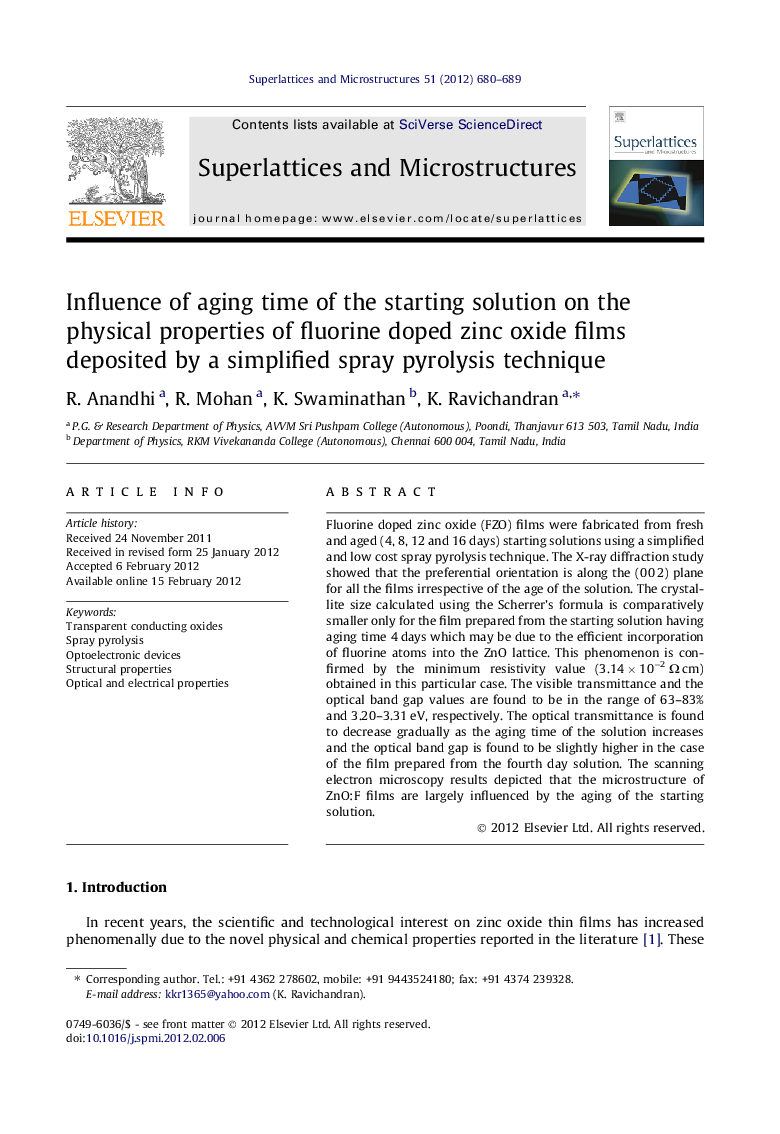| Article ID | Journal | Published Year | Pages | File Type |
|---|---|---|---|---|
| 1553802 | Superlattices and Microstructures | 2012 | 10 Pages |
Fluorine doped zinc oxide (FZO) films were fabricated from fresh and aged (4, 8, 12 and 16 days) starting solutions using a simplified and low cost spray pyrolysis technique. The X-ray diffraction study showed that the preferential orientation is along the (0 0 2) plane for all the films irrespective of the age of the solution. The crystallite size calculated using the Scherrer’s formula is comparatively smaller only for the film prepared from the starting solution having aging time 4 days which may be due to the efficient incorporation of fluorine atoms into the ZnO lattice. This phenomenon is confirmed by the minimum resistivity value (3.14 × 10−2 Ω cm) obtained in this particular case. The visible transmittance and the optical band gap values are found to be in the range of 63–83% and 3.20–3.31 eV, respectively. The optical transmittance is found to decrease gradually as the aging time of the solution increases and the optical band gap is found to be slightly higher in the case of the film prepared from the fourth day solution. The scanning electron microscopy results depicted that the microstructure of ZnO:F films are largely influenced by the aging of the starting solution.
► A simplified spray technique is used for the first time to fabricate FZO films from aged solutions. ► Minimum resistivity is achieved for 4 days of aging itself, thanks to our process conditions. ► It is showed that the aging of solution desirably enhances the fluorine incorporation. ► The improved F incorporation efficiency consequently reduces the resistivity.
